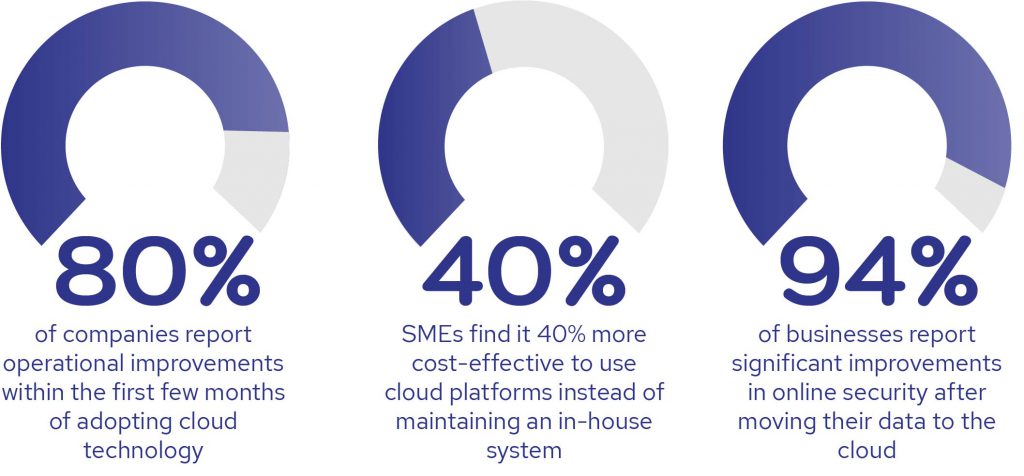Given that we are now 18 months on from the initial Covid-19 disruption that left every industry scrambling for the technology to power remote working, it may seem like an odd time to be discussing a move to the Cloud.
After all, organisations that needed to work remotely have already set up a VPN or other tools that allow their team to connect remotely. But remote access is only one of the benefits that organisations working with energy commodities can gain from the Cloud, and if you are simply granting remote access to a legacy on-premises system, you may be missing out.

Benefits of a cloud ETRM
Flexibility and customisation
One of the main benefits of a cloud ETRM is that these systems are usually designed to be much more flexible than legacy on-premises solutions. Because they are typically intended to support many different companies managing very different commodities on one central code base, they should be specifically configured to your own assets and processes as part of the implementation.
For example, Gen10’s cloud ETRM, CommOS, can manage a wide range of energy commodities, from biomass to oil and LNG. Oil traders do not need the assays that biomass procurement teams manage on a daily basis, and equally, biomass traders do not need the ability to convert between weights and barrels that is so important for liquid commodities.
CommOS is therefore built with the flexibility to allow each of our customers to determine the commodities they need and create their own unique workflows to manage them. For example, by specifying the points in their process that the ETRM automation sends a shipment for inspection or a contract for approval.
A cloud ETRM can be much easier and faster to implement, as these options are generally set up without the need for coding or development work, and they also mean that your business operates in line with the workflows you establish, so that your people are working efficiently and within your risk processes.
These workflows automatically update information and reports across the ETRM live as contracts are updated in different business areas. For example, when a trader uses CommOS to calculate pricing and create a contract, the document is automatically sent for approval. Then, depending on your workflows, operations and risk teams can be alerted or simply view the new information on their dashboard instantly, so that they can update any hedges or allocate stock to the shipments.
The shared code base that powers this flexibility is also an advantage when it comes to new product development and updates. New features can be rolled out much faster as they are only deployed on the one cloud system, rather than for each individual client, and can be carried out remotely at the most convenient time. And because developers spend less time rolling out updates, they have more time to work on new features and system improvements.
Data and decisions
Sharing information rapidly between business areas is even more important in periods of volatility such as the current LNG environment. For example, providing data to risk teams as things change rather than waiting until an end-of-day or -month report means that they can create more accurate hedges that protect your organisation from risk. And giving traders and operators better access to market information allows them to respond with agility to changing conditions and improve the profitability of their decision-making – whether that’s being the first to capitalise on a new opportunity or reallocating stock to save on shipping costs.
Alongside the data that your teams create and automatically share just by using the cloud ETRM to manage their day-to-day activity, a good cloud ETRM will allow all authorised team members to access and analyse this data however and whenever they need it. CommOS, for example, presents data in tables and grids for managing contracts and operations, in dashboards so that traders can instantly see a counterparty’s available credit or other to-the-minute information, in secure reports for management teams, or integrated with a BI solution.
And of course, one of the benefits of using a cloud solution is the ability to work from anywhere. A cloud ETRM should be fully accessible from a web browser, meaning all your people need to connect is their login details and an internet connection. Some cloud ETRMs will even allow your people to work on mobile devices or have apps built for mobile.
And if these weren’t enough reasons for you, our infographic explains even more benefits of cloud technology.
The business outcomes of cloud ETRM
To summarise all the benefits that moving to a cloud ETRM can provide, it gives your entire team better access to more relevant information, faster.
Real-time information means your business can engage in active risk management, with automated checks and controls, pre-approvals and risk dashboards that give traders the information they need on whether they can proceed with a deal.
Everyone across the business, from risk managers and operators to the C-suite has access to one single source of truth that you know is up to date and relevant because it updates as people are carrying out their tasks and the real-world situation is evolving.
And most importantly, sharing data in real time with a cloud ETRM leads to better decisions in every role across the business.
Find out more about how Gen10’s cloud ETRM is designed for businesses like yours.
Want to read more?
Subscribe now for monthly updates
By submitting your details you agree that we can store your data and communicate with you. You can opt out of these communications at any time. Read all in our Privacy Policy.



